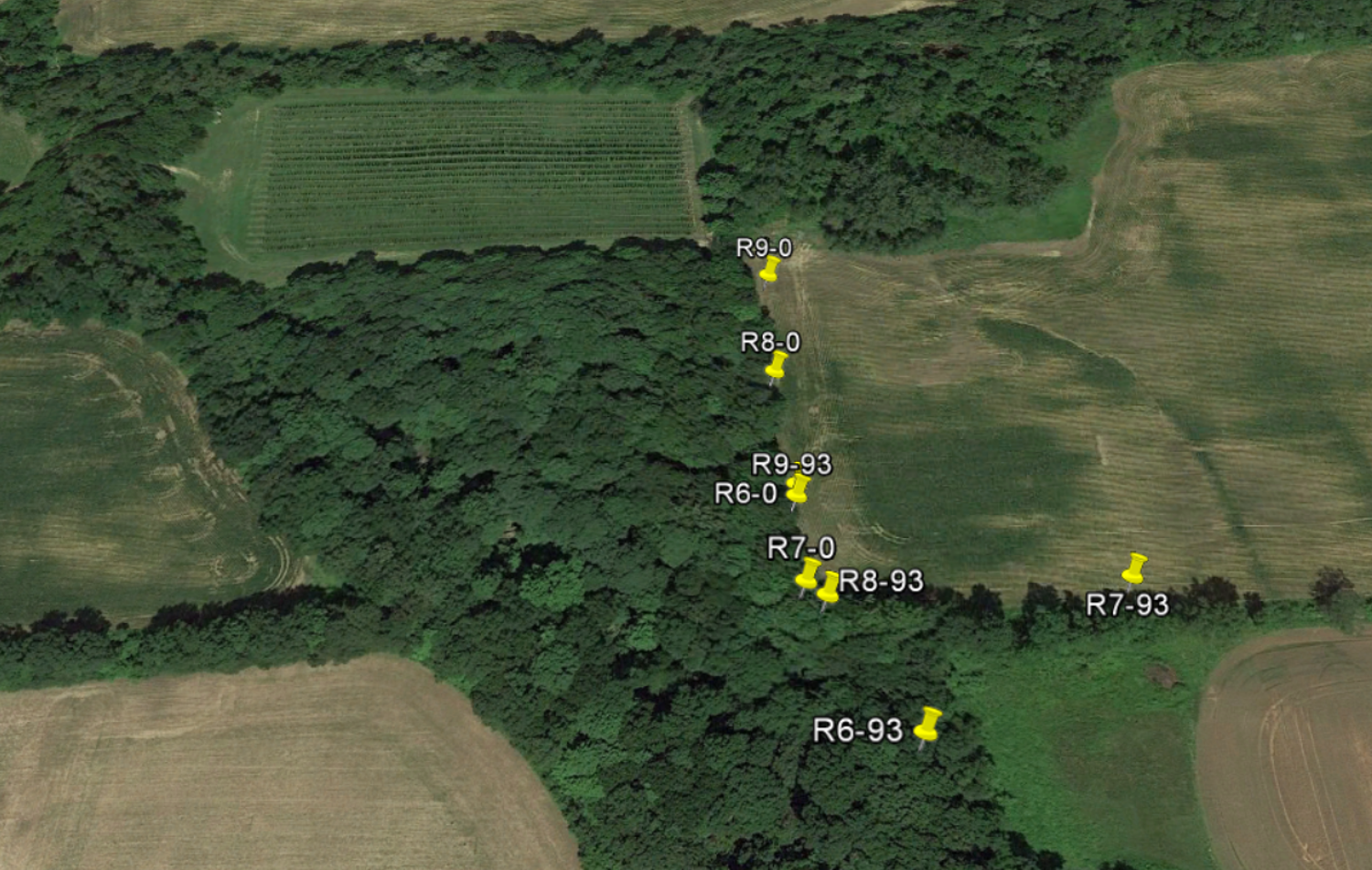|
Resistivity surveys were performed using an
MPT DAS-1 Electrical Resistivity Tomography
system in dipole-dipole array and had
electrode spacing of 3 meters with 32
electrodes in each survey.
Glacial heterogeneity was apparent in
the results of the surveys at this location
(R6).
The spring source was clearly imaged
as a low resistivity zone at a depth of
approximately 6 meters (R7).
The land owners should be able to tap
into this water resource to provide
irrigation for their hops crop.
|

Map showing the endpoints
of the surveys at the hops farm with the
rectangular hops field in the northern
portion of the im age
|